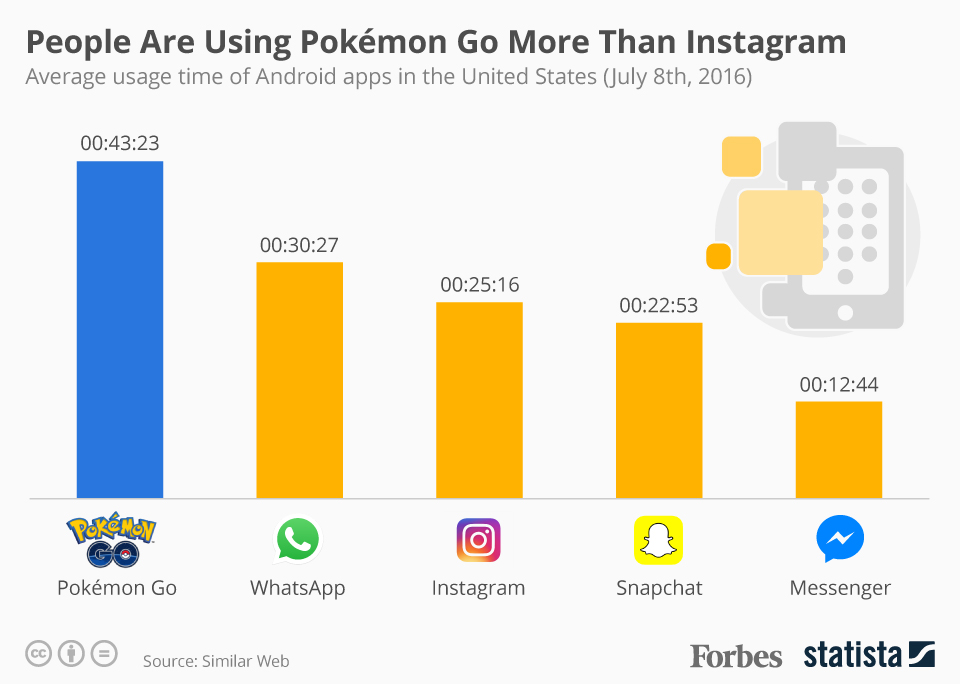Media
How Pokémon Go Cracked the Augmented Reality Code
Three years ago, everyone thought Google Glass was going to be the future of augmented reality. But by 2015, Glass had been pulled from the market and deemed a failure. Turns out, people didn’t really want AR in their glasses—they wanted it to help them catch Pokémon on their phones.
Just 24 hours after the Pokémon Go app launched on July 6, SimilarWeb found that it was already installed on more U.S. Android phones than Tinder. And just two days after the launch, Android users were spending more time on Pokémon Go than on Instagram, WhatsApp, or Snapchat.

That’s the kind of engagement brands would give an arm, a leg, and a Gyrados for. Niantic, the software company behind Pokémon Go, reached that level in less than a week. (Granted, the engagement didn’t come overnight; the game was 20 years in the making.)
In light of Pokémon Go’s success, it’s apparent that companies have been going about AR and VR the wrong way. There were—and still are—very high-concept projects out there that may sound cool, but are just too clunky, impractical, and expensive to appeal to the masses. If you want mass appeal, VR and pricy AR projects simply won’t work.
For instance, Microsoft’s unreleased HoloLens lets you interact “with holograms in relation to the world around you.” But you have to wear a headset and download specific apps from the Windows Store to do it. It’s unlikely the product will be anything more than a niche toy for early tech adopters. And other projects, like Epson’s recently launched Moverio smart glasses, don’t even bother to target the average consumer—their glasses are aimed at enterprise and government users.
Instead, it’s been more consumer-friendly products like Pokémon Go and Google Cardboard, a $50 VR headset that works with your smartphone, that have succeeded.
Of course, it helps that many players are already familiar with the Pokémon game and world. As Foursquare co-founder Dennis Crowley said, “I don’t know it would have worked if someone made up characters and called it something crazy.”
Actually, we do know that it wouldn’t have worked that way. Pokémon Go is largely based on Ingress, Niantic’s first AR game, which launched four years ago when the company was still a subsidiary of Google. While Ingress is still used by some (even in tandem with Pokémon Go), it hasn’t amassed nearly as much attention as its successor.
Pokémon Go is also super easy to play, since anyone with a smartphone can download it and start playing. No need to go out and buy a bulky thousand-dollar headset. In fact, it’s so simple to access, you can even play it while your wife’s giving birth or while you’re driving down the highway.
Now that users are warming up to AR through the Pokémon app, the doors may be open for companies to test more ambitious AR programs with their audiences. It’s rumored that Snapchat, for example, will be releasing more AR features like custom photo filters for certain locations, and perhaps even Snapchat glasses.
Then again, maybe what we really want is to keep reliving our childhoods. Full House Go, anyone?
Image by NianticGet better at your job right now.
Read our monthly newsletter to master content marketing. It’s made for marketers, creators, and everyone in between.




